Cold comfort: How to keep cool without destroying the planet
In this episode of the MaRS podcast Solve for X, we explore the problem with AC, and how innovators, engineers and architects are working to cool us down — without the emissions.
The hotter it gets outside, the more we use air conditioning, and the more we use air conditioning, the hotter it gets. AC units and refrigeration combined adds up to 10 percent of global greenhouse gas emissions. But how can we solve this cooling paradox? Building on last episode’s conversation with the UN’s global chief heat officer, host Manjula Selvarajah meets the experts harnessing novel innovations to keep cities and people cool — from massive infrastructure projects using ice-cold lake water to microscopic solutions to get rid of that sticky, sweltering humidity.
Featured in this episode:
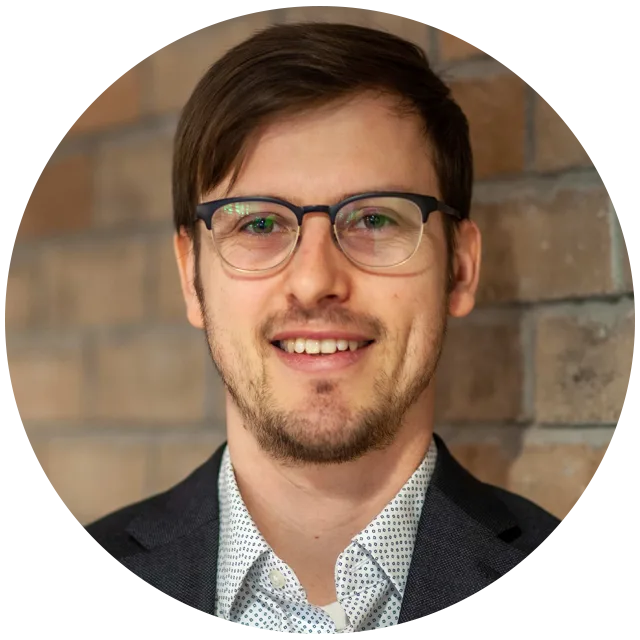

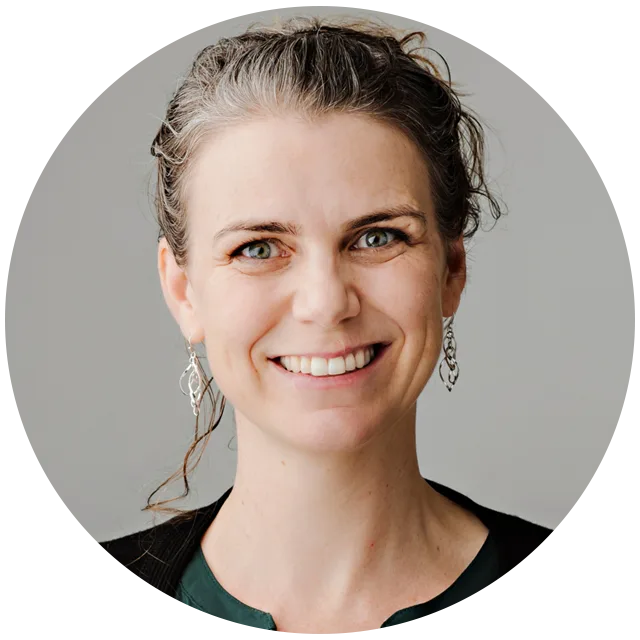
Further reading:
- Air conditioning poses a climate conundrum
- Toronto company using lake water to cool buildings expands system
- Toronto is home to the world’s largest lake-powered cooling system. Here’s how it works.
- Air conditioners fuel the climate crisis. Can nature help?
- How to build an AC that will get the world through hotter summers
- A rebuke to Modernism: the Venice Architecture Biennale imagines new ways of building to cope with climate change
Subscribe to Solve for X: Innovations to Change the World here. And below, find a transcript to “Cold comfort.”
Narration: Air conditioning is a funny thing. If it’s doing its job properly, you barely even notice it.
[beep and hum of an air conditioner]
Turn it on, and you immediately feel cool and comfortable, shielded from the heat of the day. But that ease and simplicity masks an invisible, insidious problem: The hotter it gets outside, the more we use air conditioning, and the more we use air conditioning, the hotter it gets. It’s a cooling paradox.
Experts say air conditioning and refrigeration combined account for a whopping 10 percent of global GHG emissions. That’s more than double the amount generated by air travel. And with more people looking to escape the heat, experts say demand for AC will likely soar by 40 percent over the next five years.
But air conditioning is also a technology ripe for reinvention. There are ways to improve how we cool ourselves in our buildings, innovative new systems, more sustainable techniques. These solutions are also often somewhat invisible, too — hidden under our cities or in our AC units themselves. The big question is, can we scale these quickly enough to make a meaningful difference?
I’m Manjula Selvarajah. This is Solve for X: Innovations to Change the World.
Cameron Leitch: So everything that we are going to look at from here on down is physically below the level of Lake Ontario.
Ellen Payne Smith: I feel like we’re entering, I don’t know, the belly of the city somehow. Are we going here? OK.
Narration: The cooling paradox is a concern for everyone, but I was curious about how it’s being addressed in my own city.
David MacMillan: I mean, it’s one of those things where cooling is so necessary to human health and wellbeing, and yet it’s a major source of energy use.
Narration: David MacMillan is the manager of Toronto’s low-carbon innovation team, a part of the environment, climate and forestry division. I called him up to talk about the city’s cooling and heating needs and to get his perspective on the different ways we could do it better.
Manjula Selvarajah: How much of your time is spent thinking about air conditioning?
David MacMillan: Less so than thinking about heating for the reason that heating is primarily where emissions come from, and my main focus is reducing greenhouse gas emissions. But cooling is a big part of the work that we do.
Manjula Selvarajah: Now, given that temperatures are rising in most of the major cities in the world, is there a concern about being able to meet the energy demand for AC in Toronto for the future?
David MacMillan: I mean, I would say not so much a concern, like there, whether it’s driven by climate or our desire to electrify or just growth, there’s going to be a need for a lot more electricity. The demand for electricity, just for cooling alone, will double by 2040. Overall, electricity demand in Toronto is set to increase by 75 to 100 percent as well. That’s not just because of cooling. That’s a combination of factors, you know, more electric vehicles, more heat pumps, et cetera. Bottom line is, we’ll need a lot more power to meet both our climate goals as well as just our lifestyle objectives. But a growing portion of that will be cooling demand because of, to your point, increases in outdoor temperatures, and also just ensuring that more and more people have access because not everybody does today.
Manjula Selvarajah: That’s the other thing that has to be baked into the work that you do, this idea that you also have to think about sort of equity around the city.
David MacMillan: Yes, absolutely. There’s an advocacy group called ACORN. They, I think, did a survey a few years ago of their members, and, you know, more than a third of tenants, primarily in high-rise buildings, don’t have access to any form of cooling. And those that do often they’re relying on, you know, mobile air conditioners, you know, window shakers, the kinds you install in your window — not the ideal sort of technology. So it is a big problem that cooling right now is inequitable, even in a city like Toronto. Our high rates of cooling access will skew that. It tends to be overall we have access, but those who don’t tend to be the most vulnerable. And so, yeah, equity is a very important consideration as we look to decarbonize. We have to think about these other co-benefits that we can bring by thinking about the technology to deploy.
Narration: Even as we’re making our buildings more environmentally friendly, David and his team’s modelling reveals a surprising shift: Buildings may soon need to use more energy for cooling than for heat.
David MacMillan: When you look at an annual basis, in new buildings, we’ll end up using more energy for cooling because building envelopes are getting so efficient and so airtight that they’re just losing less heat to the outside. You have to solve more for cooling than you do for heating in new construction at least. That’s a big shift in what you would typically expect in a climate like Toronto’s.
Manjula Selvarajah: That’s fascinating. So it sounds like we’ve kind of designed ourselves into a problem then, because what happens is, you know, we have all of these technologies and systems that make these buildings really effective to keep the heat, and because of that they actually don’t cool enough.
David MacMillan: Yeah. And because of our climate, all buildings in Toronto, we need both heating and cooling. Because we can design it to provide heat from solar gain, and because we have a lot of electronics in buildings, we have to be really intentional about making sure we’re able to cool those spaces on those days when it’s very warm outside. And so, I would say it’s not so much a problem, it’s just that it’s important to think about as we pursue efficiency, we can’t forget as well about comfort, and that’s really important with respect to cooling.
I’ll say we’re fortunate in Toronto and Ontario to have a generally clean electricity grid. And so, most of our cooling is low carbon, but it does place tremendous strains on our electricity system during those really hot days. And so there are implications there for how we grow and manage that power demand.
Narration: Toronto sits right at the edge of Lake Ontario. It’s one of North America’s largest, deepest bodies of water. It’s used for all the usual lake things: boating, shipping, swimming, even drinking water. But Lake Ontario also has a special, little-known power. Its icy cold water is used to cool a big part of the city’s downtown core.
[sound of waves lapping against the shore, and street noise outside a Toronto Blue Jays game]
Manjula Selvarajah: So we are outside of the Rogers Centre. It’s actually the start of the season. I love this. There’s going to be no debate that we’re walking on the street.
Narration: A few hundred metres away from the lake and all this hubbub, there’s a simple two-storey building you could walk past a hundred times without noticing.
Cameron Leitch: OK, we’re at the entrance door to our John Street Pumping Station. It’s just a little bit north of the Lake Shore and the Gardiner Expressway, as you may be able to hear in the background, and we’re about to see where our deep lake water cooling operation, the heart of it, is.
Narration: That’s Cameron Leitch. He’s the director of solutions and innovation at Enwave Energy Corporation.
Ellen Payne Smith: You guys go ahead.
Narration: Today, Cameron’s giving me and my producer, Ellie, a special tour of the heart of their facility. This John Street entrance might be nondescript, but it’s basically a portal to another world.
Manjula Selvarajah: OK, so take us on this trip.
Cameron Leitch: So we’re going this way.
Manjula Selvarajah: So are we gonna go down?
Cameron Leitch: We’re going down, yeah.
Enwave’s deep-lake water cooling system uses water from Lake Ontario to close to 100 buildings in Toronto’s downtown core.
Cameron Leitch: So the light blue all represents potable city water. And then you’ll see this sort of darker blue, that’s all the chilled water piping. So that’s on our side of our closed-loop district energy system.
Narration: If you’ve never heard of district cooling before, you’re not alone. Most buildings have their own mechanical chillers perched on rooftops or tucked away in basements, but here, buried beneath Toronto, Enwave’s built infrastructure that’s able to share cooling with a district of buildings.
Cameron Leitch: When we connect to a building, if it’s a new building, for example, it gets designed around our system. But we also connect to existing buildings, and so we work to make sure that the tenants that occupy that building won’t have any idea whether it’s coming from a pipe in the street or whether it’s coming from a chiller plant on the top of the building.
This is the largest deep lake water cooling project in the world.
Narration: Cameron showed us a schematic that detailed how it all works. It’s pretty complicated, but on a basic level, they pump very cold water out of the bottom of the lake, which hovers just above freezing year-round, and they send that cooling onto customer buildings through an underground pipe network.
Cameron Leitch: OK, so we are now in what we call our pipe gallery. That’s a pipe. For folks who have been in plants before and seen things, it’s big.
Manjula Selvarajah: You said you were going to describe engineering things to me. That’s what you mean?
Cameron Leitch: Yeah.
Manjula Selvarajah: To tell me that this pipe-looking thing is a pipe.
Cameron Leitch: It is, yeah.
[Manjula laughing]
Cameron Leitch: That’s, yeah, that’s my valuable contribution so far. And then at the other end of this, it goes back to the city.
Ellen Payne Smith: Manjula, I think you could walk through that pipe.
Manjula Selvarajah: Yeah, I think I could walk through. Yeah. It’s massive.
Cameron Leitch: Yeah, off the top of my head, I want to say it’s 1.6 metres in diameter, if I remember correctly.
Narration: You need pipes this enormous to do what this deep lake cooling system does. For the most part, the system relies on the coldness of the lake. That’s the beauty of it. Without a lake as deep or as cold as Lake Ontario, this wouldn’t be nearly as efficient. I asked Cameron just how far this network stretches.
Cameron Leitch: So it’s a big chunk of the city and it is all one common loop. So the litre of water that leaves here, maybe it goes to the Scotiabank one time, the next time it might find its way all the way up to the Queen’s Park area and serve hospitals.
Narration: Right now, it cools about a hundred big buildings. Think offices, condos, hospitals and arenas. And it does an impressive job of reducing strain on the grid, displacing about 60 megawatts of peak electrical demand. That’s roughly the equivalent of powering eight hospitals.
Cameron Leitch: At a high level, if you took all of our cooling operations, so including the pumps that are connected to deep lake, to the fourth intake, to our chiller plants that are here centrally and that we have distributed throughout the city, including the Well, we’re about twice as efficient as what a conventional cooling plant would be. On a city scale like this, the impact to the electricity grid is pretty significant.
Manjula Selvarajah: Does it help with the peak at all? Because cooling is also such a, I mean, cooling is what affects the peak at most times. We know that when we hear of a shutdown or things of that kind, it’s tied around how much cooling a city needs.
Cameron Leitch: Correct. Yep. No, absolutely it does. And you know, the added benefit to centralizing the production of the cooling is that it can be a lot easier for somebody like us to participate in load-shedding programs.
Narration: Ellie and I saw a lot more of that system.
[sound of metal banging in the John Street Pumping Station]
Narration: Explaining every detail of that would take up the rest of this episode. But the central idea behind it and the impact it has is pretty straightforward. The lake’s coolness is a powerful, renewable resource.
But I wanted to learn more about how exactly the city works with this cooling system. Here’s David MacMillan again.
David MacMillan: Enwave’s system, right now, like I said, it actually warms up the city’s drinking water. So that heat doesn’t go back to the lake, and that means we can actually drink it at a comfortable temperature. You would not be able to drink water straight out of the lake at 4 degrees Celsius and be comfortable, your teeth would hurt, your mouth would hurt. So, it actually is one of those win-wins that we try to search for, where it actually benefits the city because we don’t have to use energy to warm it up.
Narration: One of the key parts of deep lake cooling is its heat exchangers. Through a series of water loops, these enable the system to extract heat from buildings while also warming up the lake water enough to make it usable.
David MacMillan: If you think about it, it’s kind of a misnomer when we say we’re cooling the buildings. What we’re really doing is we’re pulling warm air out of the buildings that are connected to deep lake cooling. And so, pulling that heat out, of course, means that we warm up that water. But that’s actually, you know, it’s actually a good thing.
Narration: The thing is, heat doesn’t just disappear. It moves.
David MacMillan: And so this one system is doing double duty, providing cooling, very efficient cooling, as well as low-carbon heating to buildings. So it’s a great investment and what it really showcases, aside from the technology, is just the power of district energy or thermal networks as a way to, you know, achieve our climate goals while we grow.
Narration: Of course, building systems this big isn’t cheap and requires major coordination between public and private institutions.
David MacMillan: In a long timeframe, which we expect these buildings to be here for, district energy provides a platform to both decarbonize and to grow around it as the area expands. So it’s worth the upfront investment, especially for a public institution like ourselves.
Narration: Still, David is quick to point out, as powerful as the system is, it isn’t a silver bullet. Deep lake cooling depends on proximity to a large, cold body of water, and its capacity is limited. Even with the addition of a new intake pipe last year, bringing a whole bunch more cooling to the city, it can’t serve every building or neighbourhood. So I asked David what other technologies he’s optimistic about.
David MacMillan: Heat pumps are going to do most of the work as we seek to reduce emissions. So the question is more, “What can you couple those heat pumps with?” You know, the one I have in my house, the one a lot of people will be familiar with, are air source heat pumps, and that’s where you’re essentially using the energy that’s ever present in the air to provide heating and cooling. From there, the technologies, they range from things like very common ground source heating and cooling. So that’s where a heat pump is coupled with the Earth. People call it geothermal. Really, it’s geoexchange. So we are now working on projects, our first one is under construction with our partner Noventa Energy at Toronto Western Hospital, where they’ve accessed city sewers to provide heating and cooling to Toronto Western Hospital to the point where it’ll reduce their natural gas use by about 90 percent. So this is a…
Manjula Selvarajah: Really, so they’re using wastewater?
David MacMillan: Exactly.
Manjula Selvarajah: Oh, that’s interesting.
David MacMillan: So flowing wastewater contains tremendous amounts of energy that’s basically constantly replenished just because of, you know, our “presence,” uh, and our, our “activities.” And so flowing wastewater is a great medium because it’s surprisingly warm. And so that’s a great source of energy that is otherwise wasted. There are limits, because you can only take and reject so much heat to the sewers before it has effects downstream at the treatment plants. But we are nowhere near reaching those limits in Toronto because we are just starting this journey. And so, we think wastewater energy, which we have a program for, has a lot of scale and it can be a great way to both heat and cool buildings.
Similar to deep lake, we did our own shallow lake cooling project, where right next to the Waterfront Neighbourhood Centre, which is a community centre and school near Billy Bishop Airport toward the foot of Bathurst Street, we installed a heat exchanger in the slip and on an annual basis, it means we don’t use any natural gas for heating and cooling of that building. So it’s like a shallow, small version of deep lake water cooling, but the principles are the same.
Narration: If you think about it, the city is full of overlooked energy, hot and cold, hidden in wastewater, deep in the lake, or flowing quietly through systems we might barely notice. Tapping into that could go a long way toward making cooling more sustainable.
But when it comes to the nitty gritty of what it takes to cool buildings, there’s something else we can’t ignore.
David MacMillan: Whether we’re inside or outside, relative humidity is really important. If you’re damp, you’re uncomfortable. And so humidity basically describes the fact that water, so water vapour, can hold a lot of energy. So on really humid days, you know, your air conditioners, your heat pumps are working extra hard to both remove that, you know, moisture from the air, and then to feel cool in that space. And so dehumidification in Toronto’s climate is very important because it’s not only hot here in the summer, but it can be very humid as well. And the equipment you choose matters.
Narration: If you’ve ever had a conversation about summer weather, you’ve heard the expression, “It’s not the heat, it’s the humidity,” and according to David and a lot of other energy experts, when it comes to decarbonizing, humidity is also one of the biggest challenges to solve.
Right now, removing humidity usually means vapour compression, which relies on using refrigerants — potent greenhouse gases. To dig into this further, I talked to Evelyn Allen, CEO and co-founder of Evercloak.
Evelyn Allen: Removing humidity is tied directly to temperature. So if you think of grocery stores or offices where they’re quite cold, you often need a sweater and it’s really because they’re trying to get that humidity out and often they’ll reheat the space.
Narration: As Evelyn explains, these systems can also be pretty inefficient, especially in places like food storage or pharmaceutical labs where getting the air just right is critical.
Evelyn Allen: In these industrial facilities, they’re also using desiccant. So this is, they use a material that absorbs moisture, and when it absorbs that moisture, it actually generates heat, so you have to add cooling after it. So the current solutions in these industrial applications are expensive and complicated, and they use a ton of energy.
Narration: But what if we could do this in a cleaner, simpler way? That’s exactly what Evelyn and her team are working on. At their lab in Waterloo, they’re developing a membrane technology that could transform how cooling works.
Evelyn Allen: So our first step is membrane dehumidification. Our material can also be used for evaporative cooling, so you can remove the humidity and you can cool the air without any refrigerant. And that’s really our holy grail and what we’re looking to expand to in the future.

Evercloak’s membrane technology helps to remove humidity from the air.
Manjula Selvarajah: Now, do you have a piece of it around there somewhere that you can show me?
Evelyn Allen: I do, yes.
Manjula Selvarajah: Can I see it?
Evelyn Allen: Sure. So I’m just holding it up here. Essentially, it looks like a piece of paper almost, and on top of this white piece of paper, we coat it. And so there’s a brown, almost like paint coating on top of this material.
Manjula Selvarajah: Now, if I was looking at it, as I am, from a distance, it looks like wallpaper, right? Now, if I was to take, I don’t know, some kind of incredible microscope to it, what would I see?
Evelyn Allen: So you’d see sheets of this graphene oxide kind of layered up, and that’s what really enables the water vapour to go through. There’s these channels within these layers, and as a result, they kind of get plugged and air can’t go through. So it’s really unlocking this new opportunity or new way to remove humidity.
Manjula Selvarajah: And is that, is that particular material what your IP is then?
Evelyn Allen: Yeah, so it was discovered, graphene oxide, was discovered to have this unique property in 2012 by the Nobel Prize winner who discovered graphene. And a lot of people are looking at graphene oxide for a variety of applications. And to date, people have been making it in labs in very small quantities, but we’ve now translated it to large-scale manufacturing.
Narration: Graphene is considered the world’s first 2D material. It’s a million times thinner than a human hair, yet stronger than steel. Tweak it chemically, and you get graphene oxide. Scientists are also looking at whether it could be used to treat water or for solar batteries.
Evelyn Allen: There’s different theories on how graphene oxide works and why it works the way it does, and so I don’t… I can’t say kind of like a, “This is how it works,” yet. We do expect that the water coming through our material is quite pure and we’re getting ready to do some of that testing.
Narration: Evelyn has big plans for her technology. She can imagine a future where every air conditioner in every home has an Evercloak membrane inside.
Evelyn Allen: I think when you think of air conditioning, that technology is over 50 years old. Nothing has changed really with, you know, traditional vapor compression. So if I had a magic wand, I would educate everybody that this technology exists, and I think that would be enough to really move the needle.
Manjula Selvarajah: Do you see yourself in some way creating a refrigerant-free world?
Evelyn Allen: Yes, I don’t know if listeners can appreciate the amount of greenhouse gas emissions that refrigerants produce, and so I think that air conditioning has a place and it’s not going away. You know, they’re expecting it to grow significantly in the next five, 10, 20 years. And so I think coming up with solutions where we can mitigate the energy use of air conditioning and we can really look to apply it in smart solutions, in smart ways is gonna be really important, as well.
Narration: Entrepreneurs and engineers aren’t the only people thinking about the cooling paradox. This year at the Venice Architecture Biennale, curator Carlo Ratti called on participants to engage with an urgent, central question: “What will the climate be like in the future, and how can architecture adapt to it?” One person that answered the call was Netherlands-based architectural historian Daniel A. Barber.
Daniel Barber: The work that I’ve been doing is, in effect, trying to help architects understand that managing air conditioning is an important part of the climate challenge, and also trying to kind of complicate that a little bit insofar as both users, right? The people who live or work in buildings have a role to play, as do architects.
Narration: Barber and a team of collaborators were asked to imagine what the thermal conditions of Venice would be like in 2080. Together, they created a provocative project titled “Terms and Conditions.”
Daniel Barber: So what happens is you’re coming into Venice, beautiful city, hopefully the day is gorgeous and sunny, and the canals are gleaming, et cetera, the sun is bright. You go into this old building and you walk through this curtain and it’s suddenly very dark, and there’s these kinds of dark pools that surround you, which are approximating the anticipated sea level rise in Venice. As you walk toward the end of the room, it’s getting hotter and hotter and more and more humid. And meanwhile above you, air conditioners are whirring and kind of spitting and humming, putting off heat.
Narration: Visitors entering the room expecting to be cooled off only found the opposite, that it was much warmer and more uncomfortable inside.
Daniel Barber: It was quite great to see at the opening, people kind of looking around like, “What’s going on?” You know, kind of wiping their brows, like, “Why am I feeling this way?” So what we’ve done is we’ve put the waste heat in the first room.
Narration: I had to see what this looked like for myself. Even though MaRS won’t send me to Venice… there’s always Google. Now, picture this: suspended from the ceiling are dozens of old air conditioner units on display like mobile sculptures. It’s striking and almost uncanny.
Daniel Barber: And then you pass through the back set of very thick PVC kind of meat locker curtain, right? You pass through that back and then there’s the cooling side of the air conditioners above you and you feel this sort of wash of fresh air. The idea is that you sort of walk into the exhibition and you understand sort of what we’ve all signed up for. We’ve conditioned ourselves, we’ve conditioned our environment, and even though we have some solutions to sort of figure out some ways to make it better, we’re still pretty solidly stuck in this place where we’re reliant upon these systems, right? So we’ve tried to create this kind of visceral experience of that where you really feel that heat, you understand that the comfort that we’re providing for ourselves has a cost.
Narration: What Barber really wants us to think about then is not just technological fixes, but philosophical ones. If we’re really going to address the troubling issue at the heart of cooling, who gets to be comfortable and who suffers, we need to seriously reexamine the way we live now.
Daniel Barber: We, as societies, as cultures, have to transform ourselves, right? I mean, the climate is changing who we are as humans. And you know, we live in direct relationship to the world around us. I mean, the environment is our home. And as our home is being transformed, we develop different desires, we understand our relationships in different ways, we engage with the natural environment in different ways.
And so, you know, part of this premise is that the kind of business as usual model and really much of the kind of IPCC framing around the climate crisis is, in effect, how can we continue to do the same thing? You know, a sustainable building will give you the same service, it will just operate differently, like you won’t even notice.
And what I’m trying to say is, you know, that’s not gonna be enough. We also need to change who we are. We need to think about ourselves differently. We need to, if it’s hot out, maybe my working hours will be from five in the evening to midnight instead of 9 to 5, because it’s a cooler experience. I mean, that’s a simple thing, right? But it’s also about kind of living together in different ways and understanding how our thermal desires, specifically around mechanical systems, have negative impacts around the world. And yet, we keep kind of thinking we can just keep cooling ourselves and we need it. And how could I suffer when you know people are suffering, people are dying, yeah? And so we need to sort of change who we are in order to manage the situation more effectively.
Narration: We’ve all become so used to the ease and ubiquity of air conditioning. And right now as I’m recording this in late June, there’s a heat dome settling over much of North America. Yet again, we’re in the midst of that familiar and frightening feedback loop. Air conditioning has completely shaped how we design buildings and the way we live and work, but it’s only been in widespread use for about 50 years. That’s pretty recent. It’s a reminder of how quickly things can change.
Solve for X is brought to you by MaRS. This episode was produced by Ellen Payne Smith and written by Jason McBride. Lara Torvi, Sana Maqbool and Sarah Liss are the associate producers. Mack Swain composed the theme song and all the music in this episode. Gab Harpelle is our mix engineer. Kathryn Hayward is our executive producer. I’m your host, Manjula Selvarajah. This is part two of our special look about heating and cooling. If you missed my interview with the UN’s chief heat officer, check out the last episode in the feed.
Find out how MaRS supports technology ventures, investors and other organizations to accelerate the adoption of high-impact solutions to some of the world’s most pressing issues.
Photo illustration: Kelvin Li

 MaRS Staff
MaRS Staff